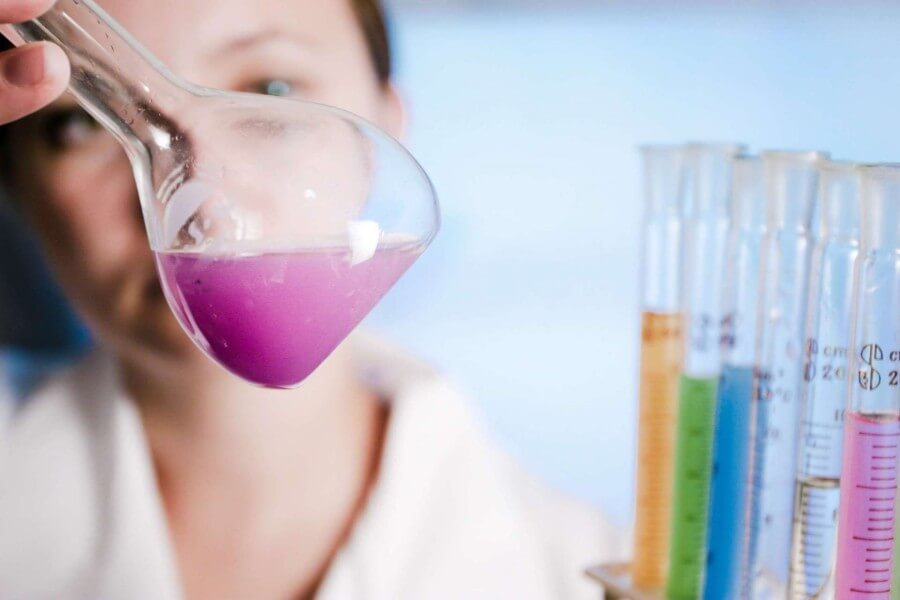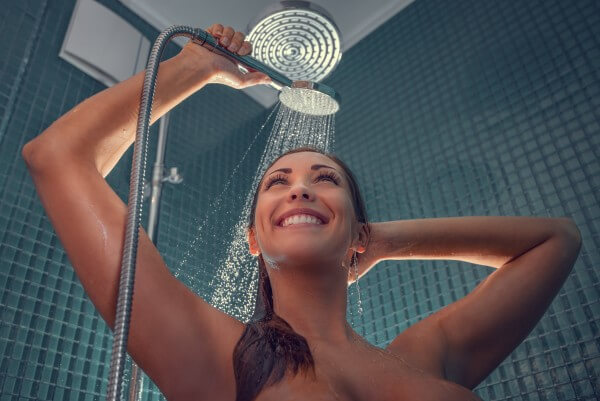Ingredients, Reviva Labs, Skin Care
The good the bad and the ugly of alcohol in skin care.
There are many types of alcohol, some good, some bad, and some ugly. But for the most part, alcohols in skin care get a bad rep’ when it’s really not deserved.
First, we have to understand a little bit about chemistry. Most of us are familiar with ethanol (ethyl alcohol) since it’s the alcohol we drink. But alcohols are more complicated and comprise many organic compounds with one or more functional hydroxyl group (Oxygen & Hydrogen) combined with a carbon atom. This makes alcohol compounds very reactive and in relation to skin care “mixable”.
So first, we have to understand, that not all alcohols are the same. And that some alcohols are going to offer benefits while others might not. In skin care, alcohols can help other chemical mix together or assist in penetration or absorption. So let’s examine the most common alcohols encountered in topical products.
The Bad (Alcohols)
The opinions on the use of alcohols typically deemed bad varies wildly depending on who you’re asking. If a brand is promoting alcohol free products then they’ll probably vilify all alcohols. But if you ask skin care formulating chemists, such as Perry Romanowski (Read The Interview) or others, you’ll likely receive a completely different opinion. And if you ask someone that’s sensitive to a particular alcohol they’ll likely lump them all together as bad.
But among beauty pundits, the “baddies” are typically SD Alcohol (specially denatured alcohol), Denatured Alcohol, and Isopropyl Alcohol. In skin care you’ll generally find these types of alcohols uses as emulsifiers or preservatives or to help penetration. As with most things, in small percentages, while controversial online, the science indicates they’re not problematic. Again, in skin care chemistry, it often comes down to the overall formula and the percentage of an ingredient and its function.
But as a rule of thumb, if you’re reviewing an ingredient panel and these “bad” alcohols appears at the start of the ingredients – you may want to select another product. But if these alcohols appear towards the end of the ingredient panel then it’s likely their overall percentage is very low – likely 1% or less.
Alcohols in skin care aren’t good or bad by nature. And in some instances, such as with the fatty alcohol group, they can be extremely beneficial to the skin.
But why do some purport that these alcohols are bad? Well in simple chemistry terms, these alcohols are essentially toxic to cells (hence their use as preservatives). Or these alcohol are used as emulsifiers to help oily substances mix with water. However, in high concentrations, these alcohols can disrupt the the oil layer of your skin – as they strip away the oil. Of course, in some instances, this can be a desirable effect (in treatments for oily skin) but in most negative scenarios it’s seen as overly drying.
It’s important to acknowledge though, that sometimes, you do need to “strip” in order to then replenish or to correct. That is, in some instances, your formula may be intended to remove excess oils and then include additional ingredients (such as restorative oils) that will replenish and adjust the natural oils on your skin.
The Good (Alcohols)
As stated at the start, alcohol compounds come in many forms, so simply declaring all alcohols bad is wrong. There are many good, beneficial alcohols known as fatty alcohols. If you see Cetyl Alcohol, Cetearyl Alcohol, or Stearyl Alcohol, you can relax knowing you’re in good alcohol country. These alcohols are emollients and are soothing and softening to the skin. These fatty alcohols also can assist in emulsification or adjust viscosity of skin care products.
Other friendly alcohols you might encounter are Myristyl Alcohol that is often used as a thicker or to aid in the “spreadability” of skin care. Arachidyl Alcohol is a waxy fatty alcohol derived from peanut oil that’s used as a thickening agent. Lanolin Alcohol, processed from the natural wool grease from sheep, is often used as an emulsifier. And it’s been used for decades to help soothe skin due to its hight concentration of cholesterol, a lipid molecule, that benefits the stratum corneum’s natural lipid matrix.
Polyvinyl alcohol, a synthetic polymer, is often used in cosmetics as a gel-based thickener or film forming agent. It’s frequently found in peel-off facial masks because it dries into a film. However, it can be irritating to skin if it’s not mixed with other emollients and beneficial skin ingredients, so while not good or bad, it’s smart to be cautious with this alcohol.
The Ugly (Alcohols)
Ok, these aren’t really ugly alcohols, but to keep our Clint Eastwood movie reference complete – we had to have this category. Our final two alcohols are generally used as preservatives, Benzyl Alcohol and Phenethyl Alcohol. Both are naturally occurring alcohols that are derived from fruits and plants. In high concentration, both can be used as fragrance additives or mild emulsifiers, but that’s a lesser use for these two “Ugly Alcohols”. The general consensus is, both are safe and acceptable when used in small concentrations. So look for them towards the end of your ingredient listing.
Alcohols aren’t good, bad, or ugly
As usual, the suitability of a molecule, is directly affected by its function and concentration. Alcohols in skin care aren’t good or bad by nature. And in some instances, such as with the fatty alcohol group, they can be extremely beneficial to the skin. Even the “baddies” SD Alcohol and denatured alcohol can be acceptable if used correctly with a specific intent. As with most topics, you can’t simple categorize alcohols as good or bad. You have to evaluate their overall use and how the product formula affects your skin.






